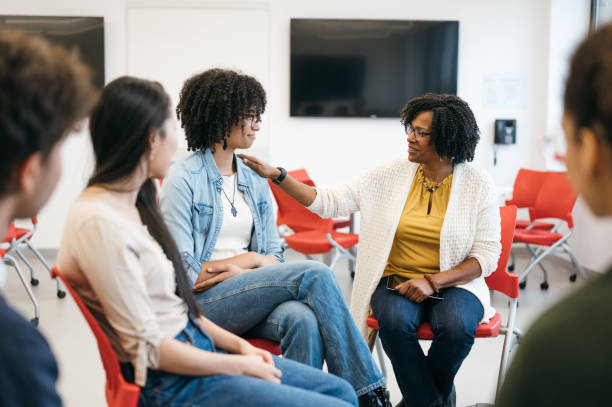When both ears hurt, feel full, or cause hearing problems, it may not be just a cold or tiredness — it could be a bilateral ear infection. This means an infection is present in both ears at the same time. It can affect anyone, but it’s more common in children and older adults. If you’re unsure about what’s going on, don’t worry. This article will guide you step by step.
Let’s break it down in the easiest way possible.
What Is a Bilateral Ear Infection?
To start, let’s understand the name. “Bilateral” means both sides — in this case, both ears. An ear infection happens when germs like bacteria or viruses cause swelling or fluid buildup in the ear.
So, when both ears are infected at once, it’s called a bilateral ear infection. This can feel more uncomfortable than a single ear problem, and it may affect your balance, sleep, and hearing.
What Causes It?
There are a few common causes that lead to this type of infection:
-
Colds or flu: These illnesses can move up into the ears.
-
Allergies: These make the ear canals swell.
-
Bacteria or viruses: These germs can get inside through the nose or throat.
-
Poor drainage: If fluid doesn’t drain properly from the ears, it can build up and cause infection.
-
Smoking or secondhand smoke: This can irritate the airways and increase the risk.
Children may get it more often because their ear tubes are smaller and block more easily.
Signs You May Have It
You may wonder, “How do I know if I have an ear problem like this?” The signs are usually clear. Here are the Double ear infection you might notice:
-
Pain or pressure in both ears
-
Trouble hearing sounds clearly
-
Feeling of fullness inside the ears
-
Fluid or pus coming from the ears
-
Trouble sleeping, especially when lying down
-
Fever, especially in kids
-
Balance problems or feeling dizzy
In babies, signs can include pulling at the ears, crying more than usual, or being fussy without any clear reason.
Why Is It Worse Than a One-Sided Infection?
When both ears are involved, it can make daily life more difficult. You might find it harder to hear, talk to others, or even stay steady on your feet. In children, it can affect speech and learning if not treated early.
Also, it may take longer to get better because the body is fighting the infection in two places instead of one.
How Doctors Check for It
A doctor can easily check your ears with a small light tool. This helps them see if there’s redness, fluid, or swelling. They may ask questions about when the pain started, what you’ve been feeling, and if you’ve had any recent illness.
Sometimes, if fluid keeps coming back, the doctor may suggest a hearing test or special scan to check the ear more deeply.
How to Treat a Bilateral Ear Infection
The good news? Treatment is often simple and works well. Here’s what most people can expect:
1. Rest and Stay Hydrated
Rest is key. Drinking fluids helps your body fight the germs faster. Try warm drinks like soup or tea for extra comfort.
2. Pain Relief
Medicines like acetaminophen or ibuprofen (only as your doctor says) can lower fever and ease the pain. Warm compresses on the ears can also bring comfort.
3. Antibiotics (If Needed)
Sometimes, the infection is caused by bacteria. If that’s the case, your doctor may give you antibiotics. It’s important to take every dose, even if you feel better early.
But not all infections need antibiotics — many are viral and go away on their own in a few days.
4. Ear Drops
If there’s fluid or a lot of pain, ear drops may be recommended. These help reduce swelling and clean out the ears.
5. Follow-Up Care
If symptoms don’t improve in a few days or come back again and again, a follow-up check is a must. This is especially true for children or anyone who keeps getting ear infections.
What You Can Do at Home
While your doctor handles the treatment, here are some easy things you can do at home to feel better:
-
Keep your head raised while resting. This helps fluid drain out of the ears.
-
Avoid loud noises or earphones. Let your ears rest.
-
Wipe the nose gently — don’t blow hard.
-
Keep the ears dry while bathing. Moisture can slow healing.
Can a Middle Ear Infection Turn Into This?
Yes, it can. A middle ear infection often starts in one ear but may spread to the other side if it’s not treated early or properly. This is another reason why noticing the signs and acting fast is helpful.
How Long Does It Take to Get Better?
Most people start to feel better within 2–3 days of starting treatment. The full recovery usually takes about a week.
However, if the ears keep getting infected or fluid stays inside for weeks, a specialist might suggest putting small tubes in the ears to help drain the fluid and stop the problem from coming back.
How to Prevent It
Want to avoid going through this again? Here are a few easy tips:
-
Wash your hands often
-
Stay away from cigarette smoke
-
Keep up with vaccinations
-
Don’t ignore colds or allergies — treat them early
-
Keep your ears dry when swimming
In kids, breastfeeding for the first 6 months and keeping their heads raised during feeding also lowers the chance of infection.
When to Get Help Right Away
In some cases, you should not wait. Call a doctor right away if:
-
You or your child has a high fever
-
There’s blood or thick pus coming from the ear
-
Pain is getting worse, not better
-
Balance is lost or there’s serious dizziness
-
Hearing loss becomes sudden or strong
Quick care means faster healing and fewer problems later.
Conclusion: You’re Not Alone—And It Can Be Fixed
Having a bilateral ear infection can be painful, frustrating, and tiring. But now, you understand what it is, how it feels, and what to do next.
Whether it’s your child or yourself dealing with it, remember that early action, rest, and the right care can bring quick relief. Knowing what to watch for and how to treat it makes all the difference.






